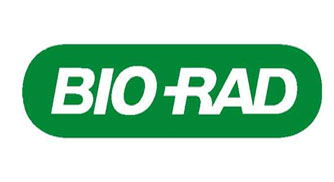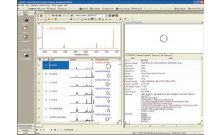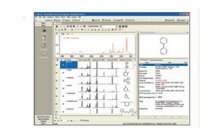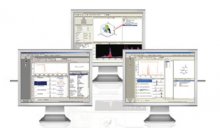光谱实验室中的数据管理
2004年4月,发表在《International Labmate》上
Conclusion
I n response to this need, Bio-Rad Laboratories, Inc. developed the KnowItAll ® Informatics System, as shown in
Figure 1. This data management system provides the analytical informatics consumer with increasingly efficient solutions that combine the means necessary to build, analyse, and access analytical databases with the ability to create, manage, and communicate knowledge from those databases.
The architecture has been designed to increase access to information and share that information with less effort. With
the combined power of a high-quality data set and the KnowItAll environment, researchers can search by spectrum, peak, structure or property, access reference spectra, make predictions, build databases with spectra, structures and chemical information, and even cross-reference data with other analytical techniques, such as infrared, vapor phase IR, Raman, Near IR, 13C NMR, 1H NMR, mass spectrometry, UV/Vis, GC, etc., as well as provide ADME/Tox predictions and generate high quality reports and laboratory forms.
Combined with a large collection of spectra prepared using IR, Raman, NMR and Mass Spectrometry analytical
techniques, this unique software facilitates the use of multiple techniques in the laboratory. It has the ability to manage data from multiple sources and helps users keep track of various types of spectral data. More importantly, it facilitates the anagement of spectral data by using the power of the data and making it accessible to all users. It also provides the user with the means to do ADME/Tox prediction. The software allows the user to view the results of prediction models such as: Absorption Rate, Bioaccumulation, Bioavailability, Blood-Brain Barrier Permeability, Elimination Half-Life, First-Pass Metabolism, Immunotoxity, Irritation, log D, log P, Metabolism, Metabolite Toxicity, Mutagenicity, Neurotoxicity, Plasma Protein Binding, pKa, Polar Surface Area, "Rule of Five" Violations, Sensitivity, Teratogenicity, Volume of Distribution, Water Solubility and more, as shown in Figure 2.
Management of data can assist in preserving valuable knowledge and identification of that knowledge can contribute to an organisation’s success. With new and powerful informatics tools, companies can now accomplish the goal of enterprise-wide information access, integration and enhanced decision-making.




